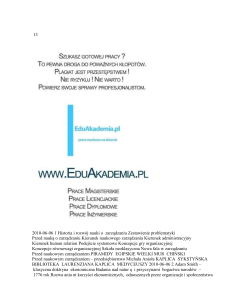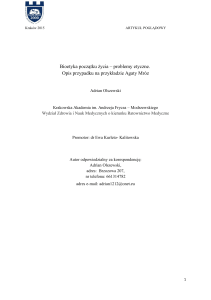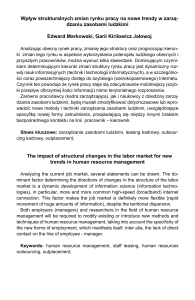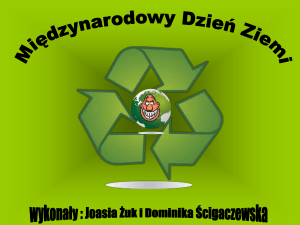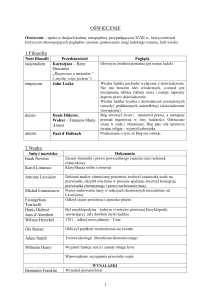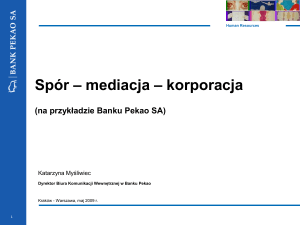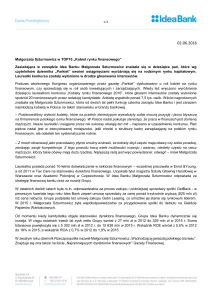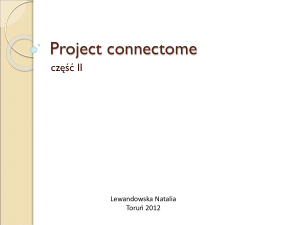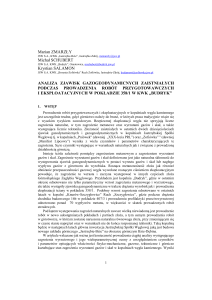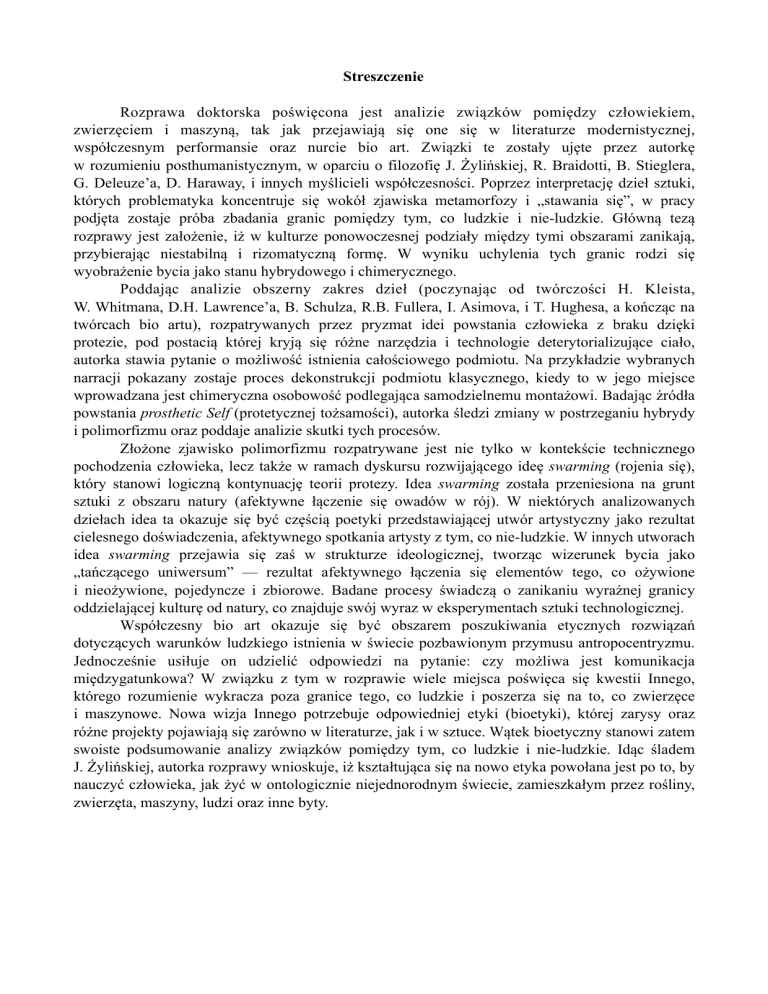
Streszczenie
Rozprawa doktorska poświęcona jest analizie związków pomiędzy człowiekiem,
zwierzęciem i maszyną, tak jak przejawiają się one się w literaturze modernistycznej,
współczesnym performansie oraz nurcie bio art. Związki te zostały ujęte przez autorkę
w rozumieniu posthumanistycznym, w oparciu o filozofię J. Żylińskiej, R. Braidotti, B. Stieglera,
G. Deleuze’a, D. Haraway, i innych myślicieli współczesności. Poprzez interpretację dzieł sztuki,
których problematyka koncentruje się wokół zjawiska metamorfozy i „stawania się”, w pracy
podjęta zostaje próba zbadania granic pomiędzy tym, co ludzkie i nie-ludzkie. Główną tezą
rozprawy jest założenie, iż w kulturze ponowoczesnej podziały między tymi obszarami zanikają,
przybierając niestabilną i rizomatyczną formę. W wyniku uchylenia tych granic rodzi się
wyobrażenie bycia jako stanu hybrydowego i chimerycznego.
Poddając analizie obszerny zakres dzieł (poczynając od twórczości H. Kleista,
W. Whitmana, D.H. Lawrence’a, B. Schulza, R.B. Fullera, I. Asimova, i T. Hughesa, a kończąc na
twórcach bio artu), rozpatrywanych przez pryzmat idei powstania człowieka z braku dzięki
protezie, pod postacią której kryją się różne narzędzia i technologie deterytorializujące ciało,
autorka stawia pytanie o możliwość istnienia całościowego podmiotu. Na przykładzie wybranych
narracji pokazany zostaje proces dekonstrukcji podmiotu klasycznego, kiedy to w jego miejsce
wprowadzana jest chimeryczna osobowość podlegająca samodzielnemu montażowi. Badając źródła
powstania prosthetic Self (protetycznej tożsamości), autorka śledzi zmiany w postrzeganiu hybrydy
i polimorfizmu oraz poddaje analizie skutki tych procesów.
Złożone zjawisko polimorfizmu rozpatrywane jest nie tylko w kontekście technicznego
pochodzenia człowieka, lecz także w ramach dyskursu rozwijającego ideę swarming (rojenia się),
który stanowi logiczną kontynuację teorii protezy. Idea swarming została przeniesiona na grunt
sztuki z obszaru natury (afektywne łączenie się owadów w rój). W niektórych analizowanych
dziełach idea ta okazuje się być częścią poetyki przedstawiającej utwór artystyczny jako rezultat
cielesnego doświadczenia, afektywnego spotkania artysty z tym, co nie-ludzkie. W innych utworach
idea swarming przejawia się zaś w strukturze ideologicznej, tworząc wizerunek bycia jako
„tańczącego uniwersum” — rezultat afektywnego łączenia się elementów tego, co ożywione
i nieożywione, pojedyncze i zbiorowe. Badane procesy świadczą o zanikaniu wyraźnej granicy
oddzielającej kulturę od natury, co znajduje swój wyraz w eksperymentach sztuki technologicznej.
Współczesny bio art okazuje się być obszarem poszukiwania etycznych rozwiązań
dotyczących warunków ludzkiego istnienia w świecie pozbawionym przymusu antropocentryzmu.
Jednocześnie usiłuje on udzielić odpowiedzi na pytanie: czy możliwa jest komunikacja
międzygatunkowa? W związku z tym w rozprawie wiele miejsca poświęca się kwestii Innego,
którego rozumienie wykracza poza granice tego, co ludzkie i poszerza się na to, co zwierzęce
i maszynowe. Nowa wizja Innego potrzebuje odpowiedniej etyki (bioetyki), której zarysy oraz
różne projekty pojawiają się zarówno w literaturze, jak i w sztuce. Wątek bioetyczny stanowi zatem
swoiste podsumowanie analizy związków pomiędzy tym, co ludzkie i nie-ludzkie. Idąc śladem
J. Żylińskiej, autorka rozprawy wnioskuje, iż kształtująca się na nowo etyka powołana jest po to, by
nauczyć człowieka, jak żyć w ontologicznie niejednorodnym świecie, zamieszkałym przez rośliny,
zwierzęta, maszyny, ludzi oraz inne byty.
Summary
The dissertation is devoted to the analysis of interrelations between a human being, animal,
and machine as they manifest themselves in modernist literature, contemporary performance art and
bio art. These interconnections are considered by the author from the posthumanist perspective
based on the philosophy of J. Żylińska, R. Braidotti, B. Stiegler, G. Deleuze, D. Haraway and other
modern thinkers. Through the interpretation of works focused on the issue of metamorphosis and
‘‘becoming’’ the author embarks on the close examination of the boundaries of the human and nonhuman. Therefore, the main argument of dissertation is a view that in postmodern culture the
boundaries between the areas of the human and non-human tend to disappear, taking on unstable
and rhizomatic forms. Such blurring or erasure of the boundaries brings about the common
proliferation of the images of being as a hybrid and chimeric condition.
Analyzing an extensive range of literary and art works (starting from the works of H. Kleist,
W. Whitman, D.H. Lawrence B. Schulz, R.B. Fuller, I. Asimov and T. Hughes, and finishing with
bio art) which are considered in connection with the idea of human creation from lack, made
possible by the prosthesis that stands for a variety of tools and technologies deterritorializing the
body, the author aims at questioning the possibility of the continued existence of a holistic subject.
Studying select narratives, the author follows the process of the deconstruction of the classical
subject introducing in its stead a chimeric personality that comes into being through selfassembling. By examining the origins of the prosthetic Self the author traces the changes in the
perception of a hybrid being and polymorphism, and analyzes the effects of these processes.
In the dissertation the complex notion of polymorphism is considered not only in terms of
the technical origin of a human being, but also within the discourse discussing the idea of swarming
which is a logical continuation of the theory of prosthesis. Notably, the idea of swarming has
recently moved from the realm of nature (where it denoted the affective swarming of insects) to the
field of art. This notion appears in some works as part of the poetics presenting the work of art as an
outcome of bodily experience, i.e. an affective encounter between the artist and non-human entities.
In other works the idea of swarming surfaces in their ideological structure. As a result, they seem to
set forth a view of being as a ‘‘dancing universe’’ that stems from the affective combination of
animate and inanimate, as well as individual and collective, elements. The processes under
examination point to the gradual disappearance of the clear border separating culture from nature,
which is what technological art attempts to rethink.
The modern bio art has become a major territory to offer new ethical recommendations for
human existence in the non-anthropocentric world. At the same time, bio art seeks to answer the
question whether interspecies communication is actually possible. Therefore, the author of the
dissertation pays particular attention to the problem of the Other, whose notion goes beyond the
limits of the human and expands to what is animal and machine. The new vision of the Other needs
a proper ethics (bioethics), the outlines and projects of which can be found both in literature and art.
Thus, bioethical considerations provide a kind of summary to the analysis of the relationship
between the human and non-human. Following in the footsteps of the philosopher J. Żylińska, the
author of the dissertation concludes that the currently shaping new directions in ethics teach human
beings how to live in the ontologically heterogeneous world inhabited by plants, animals, machines,
people, and other beings.

